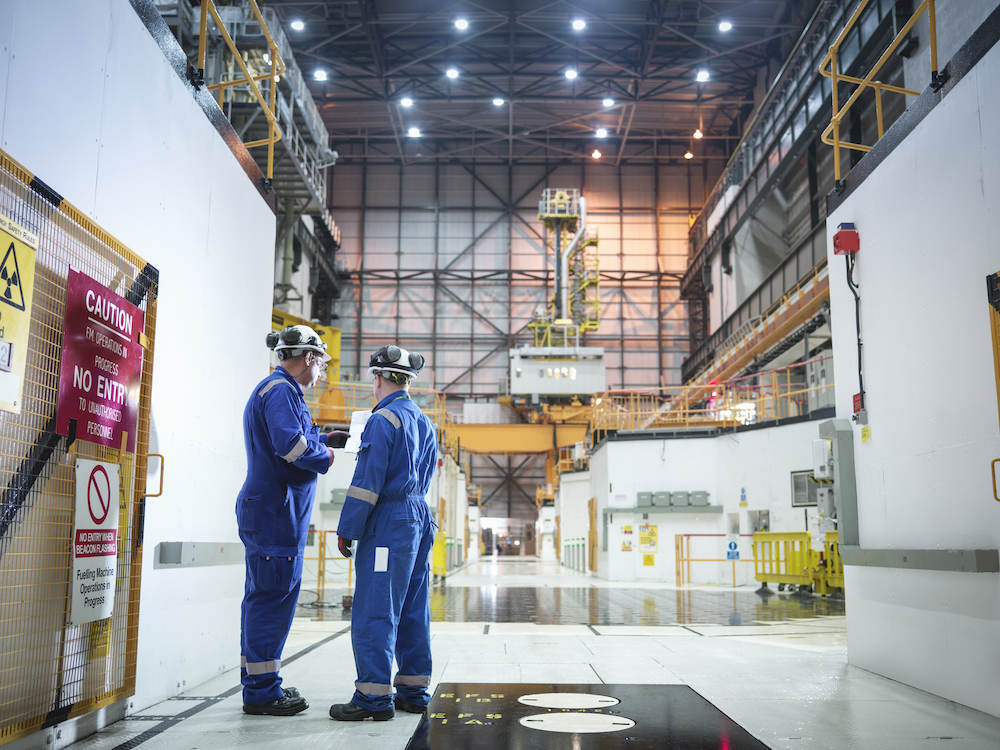- Advocates say the U.S. government’s first approval for the design of a new type of small nuclear reactor is good for the industry and may help tackle global warming.
- Nuclear power advocates have long touted it as a low carbon emission energy source that is key to fighting climate change.
- NuScale reactor design is expected to be cheaper to operate and may boost the struggling nuclear industry which has been losing market share to other energy sources.
Advocates for the struggling nuclear sector view the U.S. government’s first approval of the design of a new type of small reactor as a win for the industry and the fight against climate change.
The Nuclear Regulatory Commission said in late August that it aims to certify the design for a reactor submitted by NuScale, a company based in Portland, Oregon, that started as a technology transfer spin-off from Oregon State University.
NuScale has received government support in a public-private partnership to develop a blueprint for a small, modular reactor (SMR) nuclear power plant that can generate 60 megawatts of electricity, by using what the company says is “a safer, smaller, and scalable version of pressurized water reactor technology.”
If an operator wants to build and run an SMR plant in the U.S., they still have to seek further approvals from the NRC.
“This is a significant milestone not only for NuScale, but also for the entire U.S. nuclear sector,” said NuScale Chairman and Chief Executive Officer John Hopkins in a written statement.
The certification review has taken three years and is the first step in the process to commercialize a new type of nuclear technology that has been touted as cheaper to operate. That may boost the nuclear industry, which has seen its share of energy production decline as the use of less expensive energy sources, such as natural gas and renewables, have grown.
The share of nuclear power in the U.S. is projected to fall from about 20% of the energy mix today to 8% in the next two decades, says the International Energy Agency. The trend is driven by low electricity prices and new environmental regulations about the water used for cooling reactors, which has forced plant operators to invest millions of dollars to upgrade their operations rendering them less competitive. As a result, plant operators have closed facilities in New York, New Jersey and California.
Critics of the nuclear industry view it as unsustainable due to the difficulties around finding safe storage facilities for nuclear waste products generated by reactors. The technology is also viewed as dangerous because of several historical incidents, such as the 2011 natural disaster in Japan that led to a meltdown of the Fukushima Daiichi nuclear power plant.
But the industry says SMRs address a lot of the concerns around nuclear technology by utilizing a so-called passive safety design. If an SMR plant starts overheating and the water around the reactor evaporates, then the design automatically triggers the release of additional water, without the need for a human engineer to intervene. Also, SMRs are smaller reactors than the generation of plants built last century so they are expected to generate less nuclear waste.
Advocates for nuclear power have been trying to rally support for the sector by touting its green credentials as a low-carbon emission energy source that does not significantly contribute to global warming.
Projections by the Intergovernmental Panel on Climate Change, a U.N. body tasked with providing data on the climate, have shown that in the absence of other viable technologies nuclear power may be key to a sustainable energy future.
Christopher Guith, a senior vice president for the Global Energy Institute at the U.S. Chamber of Commerce, which has worked with NuScale, views the progress for the new reactor as positive for the industry and the environment.
“It’s very important because what the Nuclear Regulatory Commission did was to give this particular design its stamp of approval,” Guith told Karma. “If the problem is too much emission of greenhouse gases, then the solution is technologies that don’t emit greenhouse gases. Now, more people who consider themselves climate hawks have come to the conclusion that we can’t ignore nuclear.”






















